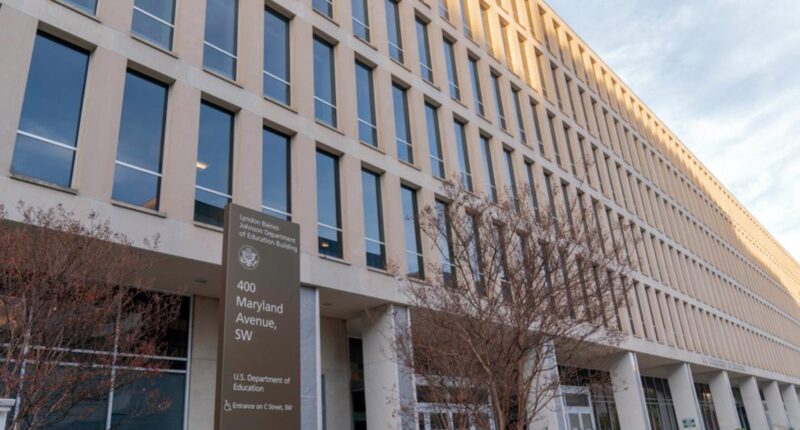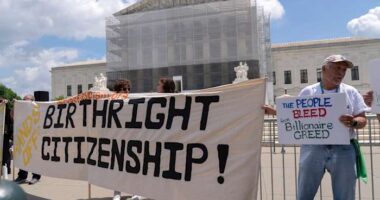
Currently, roughly 5.3 million borrowers are in default on their federal student loans.
WASHINGTON, D.C., USA — Starting Monday, the Education Department says student loans that are in default will be referred for collections.
Starting on May 5th, the department will initiate the process of involuntary collection using the Treasury Department’s offset program. This program deducts payments from government funds, such as tax refunds, federal salaries, and other benefits, from individuals who owe outstanding debts to the government. Additionally, following a 30-day notice period, the department will also start garnishing wages for borrowers who are in default.
Currently, roughly 5.3 million borrowers are in default on their federal student loans.
Collections had been paused since March 2020 due to the COVID-19 pandemic. During this time, the U.S. government suspended federal student loan payments and interest accumulation as a temporary relief measure. The grace period was extended several times by the Biden administration but came to an end in October.
The decision to resume debt collections has faced criticism from advocates. They argue that borrowers have been left feeling disoriented and uncertain due to the ever-changing student loan policies under the Biden and Trump administrations.
Borrowers who don’t make payments for nine months go into default, which is reported on their credit scores and can go to collections.
Along with the borrowers already in default, around another 4 million are 91 to 180 days late on their loan payments. Less than 40% of all borrowers are current on their student loans, department officials said.
Here are some key things to know.
How will involuntary collection work?
Beginning May 5, the department will begin involuntary collection through the Treasury Department’s offset program. Borrowers who have student loans in default will receive communication from Federal Student Aid in the upcoming weeks with information about their options, according to the Education Department.
Involuntary collection means the government can garnish wages, intercept tax refunds and seize portions of Social Security checks and other benefit payments to go toward paying back the loan.
What is the difference between delinquent and default in my student loans?
A student loan becomes delinquent when a borrower doesn’t make a payment 90 days after its due date. If you continue to be delinquent on your loan for 270 days — or roughly nine months — then your loan goes into default.
While being delinquent affects your credit score, going into default has more serious consequences such as wage garnishment.
What happens when a loan goes into default?
When you fall behind on a loan by 270 days, the loan appears on your credit report as being in default. Once a loan is in default the government will send the borrower into collections.
What can I do right now if my student loan is in default?
The Education Department is recommending borrowers visit its Default Resolution Group to make a monthly payment, enroll in an income-driven repayment plan, or sign up for loan rehabilitation.
Betsy Mayotte, president of The Institute for Student Loan Advisors, recommends loan rehabilitation as an option.
Borrowers in default must ask their loan servicer to be placed into such a program. Typically, servicers ask for proof of income and expenses to calculate a payment amount. Once a borrower has paid on time for nine months in a row, they are taken out of default, Mayotte said. A loan rehabilitation can only be done once.
What does forbearance mean?
Student loan forbearance is a temporary pause on your student loan payments granted to borrowers who are experiencing financial difficulties. To apply for forbearance, borrowers must contact their loan servicer.
Borrowers can be granted forbearance by their loan servicer for up to 12 months but interest will continue to accrue during this period.
What about Trump’s order on the Department of Education?
Yes, Trump derided the Education Department as wasteful and polluted by liberal ideology. However, completing its dismantling is most likely impossible without an act of Congress, which created the department in 1979.
The order says the education secretary will, “to the maximum extent appropriate and permitted by law, take all necessary steps to facilitate the closure of the Department of Education and return authority over education to the States and local communities.”
Trump said his administration will close the department beyond its “core necessities,” preserving its responsibilities for Title I funding for low-income schools, Pell grants and money for children with disabilities.
In March, Trump said the Small Business Administration would take over the $1.6 trillion federal student loan portfolio.
Copyright 2025 Associated Press. All rights reserved. This material may not be published, broadcast, rewritten, or redistributed.
















